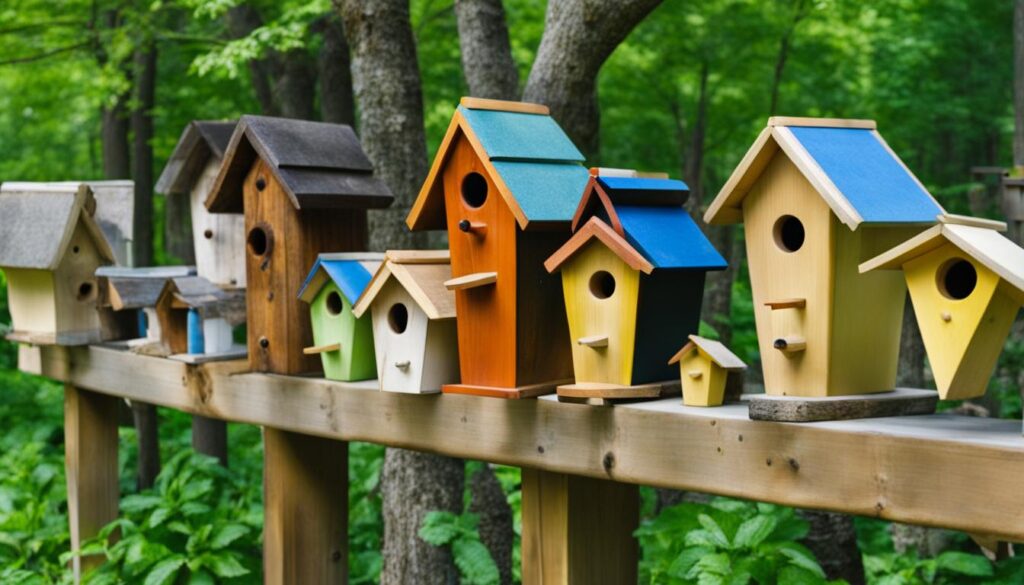Are you looking to attract birds to a birdhouse in your backyard? Creating a welcoming environment for these feathered friends can bring joy and beauty to your outdoor space. By understanding the nesting habits of different bird species and implementing a few simple strategies, you can increase the likelihood of attracting birds to your birdhouse.
First, it’s important to consider the nesting habits of the specific bird species you want to attract. Cavity nesting birds, like bluebirds, chickadees, and wrens, prefer to use birdhouses or nest boxes. By familiarizing yourself with the bird species present in your area, you can cater to their nesting preferences.
In addition to selecting the right birdhouse, creating a bird-friendly backyard habitat is essential. Native plants that provide food sources, access to water, and shelter in the form of brush piles can all entice birds to visit and potentially nest in your yard.
To minimize nuisances and create a safe environment, it’s important to take a few extra steps. Installing squirrel baffles, elevating the birdhouse, and keeping a clear radius around it can help deter unwanted visitors. Regular cleaning of the birdhouse and feeders also discourages insects and rodents from taking up residence.
With these tips in mind, you can attract a variety of bird species to your birdhouse and enjoy the beauty of nature right in your own backyard.
Understanding Nesting Habits and Birdhouse Selection
To attract nesting birds, it is important to understand their nesting habits and preferences. Different bird species prefer different nesting habitats, such as open areas or wooded and shrubby spots. Many birds feel safest when their houses are placed 5 to 15 feet off the ground, protected from wind and direct sunlight, and in low-traffic areas. It is recommended to use birdhouses with different-size entrance holes to accommodate different species.
Native plants in your yard can also attract birds by providing food sources and natural habitats. When selecting a birdhouse, choose one that can withstand the elements and avoid using chemically treated materials. Wooden birdhouses made from cedar or redwood are durable and resistant to decay. Applying a water-based sealant can also help protect the birdhouse from weather damage.
Keeping the birdhouse clean is essential to attract nesting birds. Regularly remove old nests and debris to provide a clean and hygienic environment for new occupants. Secure the birdhouse to trees or use poles to prevent it from swinging or falling. This stability reassures birds and makes them more likely to select the birdhouse for nesting.
Providing nesting materials near the birdhouse can also enhance its appeal. Offer twigs, grass, leaves, or other readily available materials in a nearby basket or container. Birds can then easily access the nesting materials and build their nests.
By understanding nesting habits and carefully selecting and maintaining birdhouses, you can create a welcoming environment for nesting birds in your yard.
Minimizing Nuisances and Creating a Safe Environment
When attracting birds to your birdhouse, it is crucial to minimize nuisances and create a safe environment. By taking a few simple steps, you can ensure that your feathered friends feel welcome and protected.
To keep pests and unwanted critters at bay, consider installing squirrel baffles and elevating the birdhouse. These measures will discourage any unwanted visitors from accessing the birdhouse and causing disturbances.
Another important factor is the location of the birdhouse. Clearing a 10-foot radius around the birdhouse and avoiding placing it near branches, fencing, or vegetation can prevent other animals from easily reaching it. By providing a clear and uncluttered space, you minimize potential risks and create a safe haven for birds.
Regular cleaning of the birdhouse is essential as well. After the young birds have left, be sure to clean out the nest to discourage insects and rodents from moving in. This practice not only promotes hygiene but also minimizes potential nuisances and improves the well-being of the avian residents.
To further enhance the safe environment for birds, it is recommended to keep bird feeders at a distance from the birdhouse and clean them regularly. Bringing the bird feeders inside at night can also deter unwanted visitors and minimize disturbances.
Lastly, providing a bird bath and planting a variety of plants in your yard can create a welcoming and secure space for birds. A bird bath offers access to fresh water, while native plants provide natural food sources and habitats for birds, enhancing their overall safety and well-being.
Can Using Hostas Help Attract Birds to a Birdhouse?
Hostas, known for their lush foliage, can be used to attract birds to a birdhouse. By planting hostas near the birdhouse, you can provide a natural shelter for birds to nest and seek refuge. Plus, you can propagate hostas easily at home to create more bird-friendly environments.










